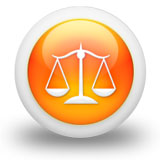We need your consent to use the individual data so that you can see information about your interests, among other things. Click "OK" to give your consent.
ASTM F3239-22
Standard Specification for Aircraft Electric Propulsion Systems
Translate name
STANDARD published on 1.4.2022
The information about the standard:
Designation standards: ASTM F3239-22
Note: WITHDRAWN
Publication date standards: 1.4.2022
SKU: NS-1053527
The number of pages: 8
Approximate weight : 24 g (0.05 lbs)
Country: American technical standard
Category: Technical standards ASTM
The category - similar standards:
Aerospace engines and propulsion systemsAerospace electric equipment and systems
Annotation of standard text ASTM F3239-22 :
Keywords:
electric aircraft, electric engine, electric propulsion, ESS, powerplant,, ICS Number Code 49.050 (Aerospace engines and propulsion systems),49.060 (Aerospace electric equipment and systems)
Additional information
| 1. Scope |
|
1.1?This specification addresses airworthiness requirements for the design and installation of electric propulsion systems for aeroplanes. Hybrid-electric propulsion systems are addressed implicitly unless explicitly stated otherwise. This specification was written with the focus on electric propulsion systems with conventional system layout, propulsion characteristics, and operation. The content may be more broadly applicable; it is the responsibility of the applicant to substantiate broader applicability as a specific means of compliance. 1.2?An applicant intending to propose this information as Means of Compliance for a design approval must seek guidance from their respective oversight authority (for example, published guidance from applicable CAAs) concerning the acceptable use and application thereof. For information on which oversight authorities have accepted this standard (in whole or in part) as an acceptable Means of Compliance to their regulatory requirements (hereinafter the Rules), refer to the ASTM Committee F44 web page (www.astm.org/COMMITTEE/F44.htm). Annex A1 maps the Means of Compliance described in this specification to EASA CS-23, amendment 5, or later, and FAA 14 CFR Part 23, amendment 64, or later. 1.3?This standard does not purport to address all of the safety concerns, if any, associated with its use. It is the responsibility of the user of this standard to establish appropriate safety, health, and environmental practices and determine the applicability of regulatory limitations prior to use. 1.4?This international standard was developed in accordance with internationally recognized principles on standardization established in the Decision on Principles for the Development of International Standards, Guides and Recommendations issued by the World Trade Organization Technical Barriers to Trade (TBT) Committee. |
We recommend:
Updating of laws
Do you want to be sure about the validity of used regulations?
We offer you a solution so that you could use valid and updated legislative regulations.
Would you like to get more information? Look at this page.




 Cookies
Cookies
